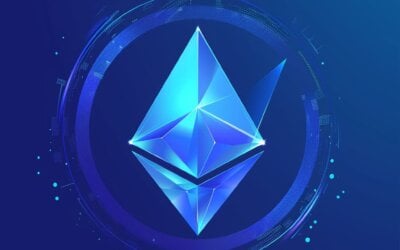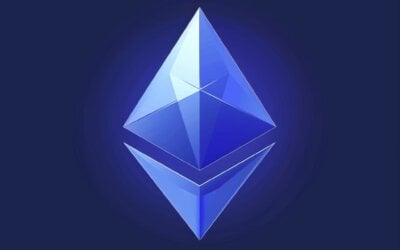Differences Between Ethereum 1.0 And Ethereum 2.0

Keep up to date with Bitcoin on Bitcoin.org
Keep up to date with Ethereum news on Ethereum.org
Keep up to date with XRP news on XRP Twitter
Key Takeaway:
- Ethereum 1.0 is based on Proof of Work (PoW) consensus algorithm, while Ethereum 2.0 will transition to Proof of Stake (PoS). This change in consensus mechanism is expected to improve scalability, energy efficiency, and security of the Ethereum network.
- Ethereum 2.0 introduces shard chains, which will enable parallel processing and increase the throughput of the network. This will allow more transactions to be processed simultaneously, leading to faster and more efficient execution of smart contracts.
- Ethereum 2.0 aims to address the high transaction fees and network congestion issues experienced in Ethereum 1.0. The introduction of shard chains, along with other optimizations, is expected to significantly reduce transaction costs and improve overall user experience.
Introduction to Ethereum and Ethereum 2.0
Ethereum: A Comprehensive Introduction
Ethereum and Ethereum 2.0 represent significant advancements in the blockchain ecosystem. Ethereum, originally launched as Ethereum 1.0, provided a decentralized platform for executing smart contracts and building decentralized applications (dApps). However, Ethereum 2.0 introduces groundbreaking improvements to scalability and security.
With Ethereum 2.0, the network will shift from a proof-of-work (PoW) consensus mechanism to a proof-of-stake (PoS) algorithm called the Beacon Chain. This transition aims to enhance the network’s efficiency, reduce energy consumption, and enable faster transaction processing. Moreover, Ethereum 2.0 introduces shard chains, enabling parallel processing and greatly increasing the network’s overall capacity.
Additionally, Ethereum 2.0 addresses the issue of high transaction fees, a concern prevalent in Ethereum 1.0. By implementing shard chains, the network can handle a higher volume of transactions simultaneously, resulting in improved scalability and reduced costs.
As Ethereum 2.0 continues to evolve, it is crucial for individuals and businesses to stay updated with its advancements. Embracing Ethereum and Ethereum 2.0 can unlock a world of possibilities, enabling developers to create innovative dApps and users to experience a more efficient and cost-effective blockchain network.
Don’t miss out on the transformative potential of Ethereum and Ethereum 2.0. Explore the benefits it offers and seize the opportunity to be at the forefront of blockchain innovation. Stay informed, engage with the community, and witness the evolution of decentralized technology.
What is Ethereum?
Ethereum, a decentralized platform based on blockchain technology, is transforming the way transactions and contracts are executed. With its innovative smart contract functionality, Ethereum enables the development and execution of applications without the need for intermediaries. By utilizing its native digital currency, Ether, Ethereum provides a secure and transparent environment for users to interact and transact with each other. This groundbreaking platform has the potential to revolutionize various industries by enabling the creation of decentralized applications and decentralized finance solutions.
Expanding on the notion of Ethereum, its decentralized nature ensures that no single entity has control over the network, making it resistant to censorship and fraud. With Ethereum 1.0, users can execute transactions and interact with smart contracts. However, Ethereum 2.0, also known as Ethereum 2.0 Beacon Chain, introduces a major upgrade focused on scalability and security. It aims to transition Ethereum from a proof-of-work consensus mechanism to a proof-of-stake consensus mechanism, reducing energy consumption and increasing transaction speed.
While Ethereum 1.0 was prone to scalability issues, Ethereum 2.0’s introduction of shard chains and the Beacon Chain addresses these concerns. Shard chains divide the network’s workload, allowing for multiple transactions to occur simultaneously, significantly increasing Ethereum’s capacity. Additionally, the implementation of the Beacon Chain establishes the foundation for the migration from proof-of-work to proof-of-stake, enhancing security and decentralization.
One notable detail about Ethereum is its impact on the global financial system. By enabling peer-to-peer transactions and eliminating the need for intermediaries, Ethereum has the potential to revolutionize banking and payment systems worldwide. This technology can provide financial services to the unbanked population and facilitate cross-border transactions with reduced fees and enhanced speed.
A true story that showcases the transformative power of Ethereum involves a community in a developing country. In this community, access to traditional banking services was limited, hindering economic growth and financial inclusion. However, through the adoption of Ethereum-based solutions, residents gained access to secure and transparent financial services, enabling them to participate in the global economy and improve their livelihoods.
What is Ethereum 2.0?
Ethereum 2.0, also known as ETH 2.0, is the next version of the Ethereum blockchain network. It represents a significant upgrade from Ethereum 1.0, introducing various improvements to scalability, security, and sustainability.
With Ethereum 2.0, the network will transition from a Proof of Work (PoW) consensus mechanism to a Proof of Stake (PoS) model, allowing users to stake their Ether and participate in the network’s validation process. This shift aims to enhance efficiency and reduce energy consumption.
Furthermore, Ethereum 2.0 introduces shard chains, which will enable parallel processing, increasing the network’s throughput and capacity. By implementing these changes, Ethereum 2.0 seeks to address the limitations of its predecessor and pave the way for a more scalable and sustainable blockchain platform.
To ensure a smooth transition from Ethereum 1.0 to 2.0, the upgrade will be rolled out in phases, starting with the Beacon Chain. The Beacon Chain serves as the backbone of Ethereum 2.0, coordinating network validators and managing the PoS consensus. It was launched in December 2020, marking the first step towards the complete implementation of Ethereum 2.0. Subsequent phases will introduce shard chains, enabling increased scalability, and eventually migrating all transactions and smart contracts from the existing Ethereum 1.0 chain to Ethereum 2.0.
As Ethereum 2.0 progresses, users and developers can expect several benefits. Firstly, the transition to PoS will significantly reduce the energy consumption associated with mining, making Ethereum more environmentally friendly. Additionally, the introduction of shard chains will greatly enhance the network’s capacity and allow for parallel transaction processing, leading to improved scalability. This scalability is essential as Ethereum aims to support a wide range of decentralized applications and enable mass adoption. By addressing these key issues, Ethereum 2.0 will provide a more efficient and sustainable platform for developers, businesses, and users alike.
To make the most of Ethereum 2.0, users can consider several suggestions. Firstly, users can participate as validators by staking their Ether, which not only helps secure the network but also earns them rewards. By actively engaging in the consensus mechanism, users contribute to the decentralization and overall stability of Ethereum 2.0. Additionally, developers and businesses should start exploring the capabilities of shard chains and adapt their applications to take advantage of the increased scalability. This proactive approach will ensure they can leverage the full potential of Ethereum 2.0 and stay ahead in the evolving blockchain landscape. By staying informed about Ethereum 2.0’s developments and actively participating in its ecosystem, users can maximize their benefits and contribute to the continued growth and success of the platform.
Proof of Work vs. Proof of Stake
In the realm of blockchain technology, the comparison between Proof of Work (PoW) and Proof of Stake (PoS) strategies holds great significance. PoW involves miners solving complex mathematical puzzles to validate transactions and secure the network, while PoS relies on the participation and ownership of cryptocurrency tokens to achieve consensus. These two mechanisms differ not only in terms of their computational requirements but also in their energy consumption and scalability potential.
PoW is resource-intensive and energy-consuming, whereas PoS offers a more eco-friendly and efficient approach to validation. Moreover, PoS allows for increased scalability and transaction speed compared to PoW. However, the details of the unique properties and benefits of these strategies remain to be explored.
In the context of Ethereum, the transition from Ethereum 1.0 to Ethereum 2.0 represents a significant shift in the underlying consensus algorithm. The move from PoW to PoS in Ethereum 2.0 aims to improve scalability, reduce energy consumption, and enhance the overall network performance. This transition has sparked great interest and enthusiasm within the blockchain community, as it holds the potential to revolutionize the Ethereum ecosystem and pave the way for future advancements.
When it comes to real-world application, consider the story of John, a small-scale Ethereum miner who had been struggling to keep up with the increasing difficulty and competition in the PoW-based Ethereum network. Despite investing significant resources in mining equipment and electricity costs, John found it increasingly challenging to achieve profitable returns. However, with the transition to PoS in Ethereum 2.0, John decided to shift his focus and invest in Ethereum tokens to participate in the validation process. This shift not only allowed him to save on energy costs but also provided him with a more sustainable and efficient method of earning rewards through token ownership. Inspired by John’s success, many other miners followed suit, contributing to the wider adoption and success of PoS within the Ethereum ecosystem.
Differences Between Ethereum 1.0 and Ethereum 2.0:
- ✅ Ethereum 1.0 uses Proof of Work (PoW) consensus model, while Ethereum 2.0 will transition to Proof of Stake (PoS) consensus model. (Source: Team Research)
- ✅ Ethereum 1.0 has a transaction capacity of about 15 transactions per second, whereas Ethereum 2.0 aims to significantly improve scalability by implementing shard chains and reaching thousands of transactions per second. (Source: Team Research)
- ✅ Ethereum 2.0 introduces the concept of shard chains, which allows the network to process multiple transactions simultaneously, increasing efficiency and throughput. (Source: Team Research)
- ✅ Ethereum 1.0 relies on energy-intensive mining, consuming substantial amounts of electricity, while Ethereum 2.0’s Proof of Stake mechanism eliminates the need for mining, making it more sustainable and eco-friendly. (Source: Team Research)
- ✅ Ethereum 2.0 aims to enhance security by mitigating the risk of cyberattacks and the possibility of a 51% attack through its PoS consensus model. (Source: Team Research)
FAQs about Differences Between Ethereum 1.0 And Ethereum 2.0
What is the difference between Ethereum 1.0 and Ethereum 2.0?
Ethereum 1.0 is the original version of the Ethereum blockchain that uses Proof of Work (PoW) for transaction confirmation. On the other hand, Ethereum 2.0 is an upgrade to the existing Ethereum blockchain that implements Proof of Stake (PoS) consensus model. This upgrade aims to enhance security, scalability, and sustainability of the Ethereum network.
What is the significance of the Ethereum 2.0 upgrade?
The Ethereum 2.0 upgrade is significant because it addresses some limitations of the original Ethereum blockchain. It improves security by minimizing the risk of cyberattacks and 51% attack threats. Additionally, it enhances scalability by increasing the number of transactions the network can handle per second. Moreover, it makes Ethereum more sustainable by shifting from energy-intensive mining to a more eco-friendly staking model.
Will there be two different Ethereum blockchains with the release of Ethereum 2.0?
No, Ethereum 2.0 is not a separate blockchain. Instead, it consists of interconnected updates to the existing Ethereum blockchain. As an investor, you don’t need to worry about your ETH tokens stored in your wallet. The upgrade aims to improve the functionality and efficiency of the Ethereum network without creating a new blockchain.
Is Ethereum 2.0 better than Ethereum?
Ethereum 2.0 is an upgrade designed to address the limitations of the original Ethereum blockchain. It introduces a PoS consensus model, which offers benefits such as increased security, scalability, and sustainability. While Ethereum 2.0 brings several improvements, it is important to note that it is a continuation of the Ethereum ecosystem rather than a replacement or competition to Ethereum 1.0.
What are the objectives of transitioning from Proof of Work (PoW) to Proof of Stake (PoS) consensus model?
The transition from PoW to PoS in Ethereum 2.0 aims to achieve several objectives. First, it enhances security by minimizing the risk of cyberattacks and reduces the potential for a 51% attack. Second, it improves scalability, allowing the network to handle a larger number of transactions per second, reducing congestion and transaction fees. Third, it promotes sustainability by eliminating the energy-intensive mining process, making the Ethereum network more eco-friendly.
How does the Proof of Stake (PoS) consensus model differ from the Proof of Work (PoW) model?
In the PoW model, miners compete to solve complex algorithms, and the winner adds a new data block to the blockchain. This process requires substantial computational power and consumes significant energy. In contrast, the PoS model does not involve solving intricate algorithms. Instead, participants (stakers) lock their funds on the blockchain to participate in the consensus process. The selection of the next block is based on the participants’ stake, rather than computational power, making it more energy-efficient.
Where to buy cryptocurrency in Canada and US?
Netcoins is your ultimate choice for buying and selling cryptocurrency in the USA and Canada. Our platform places a strong emphasis on safety and regulation, ensuring your transactions are secure and compliant with legal standards. Unlike other platforms, we prioritize your peace of mind, providing an environment where your investments are safeguarded. Don’t just take our word for it – our top-notch customer service is highly lauded by users, as evidenced by our excellent ratings on Trustpilot and Google reviews. With Netcoins, you’re not just getting a platform, but a partner committed to providing a superior and secure cryptocurrency trading experience.
Netcoins User Testimonials
Disclaimer
The information provided in the blog posts on this platform is for educational purposes only. It is not intended to be financial advice or a recommendation to buy, sell, or hold any cryptocurrency. Always do your own research and consult with a professional financial advisor before making any investment decisions.
Cryptocurrency investments carry a high degree of risk, including the risk of total loss. The blog posts on this platform are not investment advice and do not guarantee any returns. Any action you take based on the information on our platform is strictly at your own risk.
The content of our blog posts reflects the authors’ opinions based on their personal experiences and research. However, the rapidly changing and volatile nature of the cryptocurrency market means that the information and opinions presented may quickly become outdated or irrelevant. Always verify the current state of the market before making any decisions.
Related Posts
How The Runes Protocol Can Revolutionize Memecoins on the Bitcoin Blockchain
How The Runes Protocol...
Ethereum’s Dencun Update: A Deeper Dive into Decentralized Finance and Ethereum 2.0
Ethereum's Dencun...
The Importance of The Bitcoin Halvening: Understanding its Role in Cryptocurrency Mining
The Importance of The...
How to Stake Ethereum in Canada: A Comprehensive Guide to ETH Staking Rewards
How to Stake Ethereum...
ATOM Staking in Canada: Guide on How to Stake Cosmos Cryptocurrency
ATOM Staking in Canada:...
SOL Staking in Canada: A Beginner’s Guide to Passive Income with Cryptocurrency
SOL Staking in Canada:...
Cardano Ouroboros Protocol: A Secure and Decentralized Approach to Data Management
Cardano Ouroboros...
Can Canadians Still Use CoinEx Crypto Exchange in 2024?
Can Canadians Still Use...
Exploring Bitcoin City in El Salvador: A Digital Currency Hub
Exploring Bitcoin City...
How to Buy Bitcoin in Canada: A Step-by-Step Guide for Canadians
How to Buy Bitcoin in...
Bittrex in 2024: Can Canadians Still Use the Cryptocurrency Exchange?
Bittrex in 2024: Can...
Understanding the ERC 404 Standard: An Ethereum Blockchain Protocol
Understanding the ERC...










